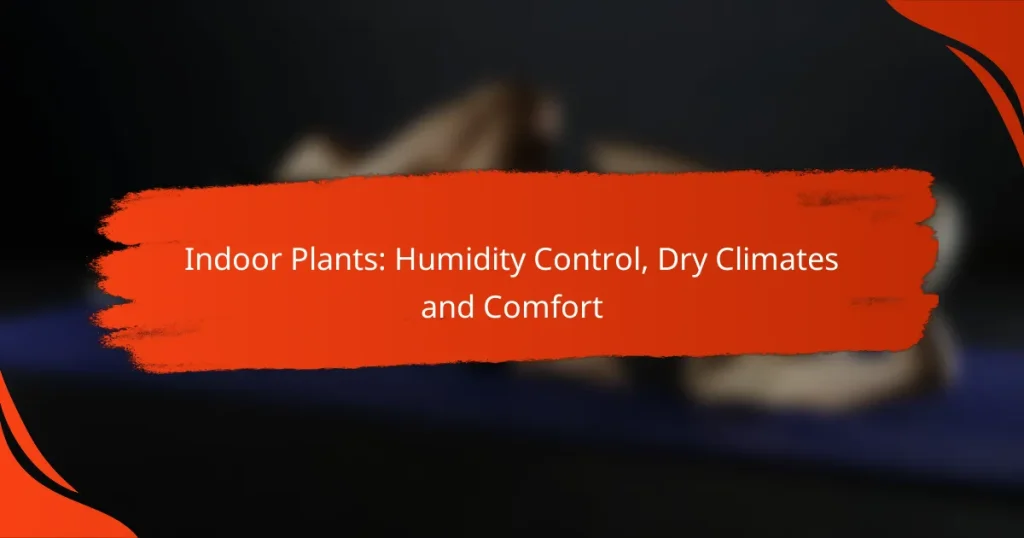Maintaining humidity for indoor plants in dry climates is crucial for their health and growth. By implementing effective strategies, you can enhance moisture levels and create a more suitable environment for your plants, ensuring their vitality and resilience in arid conditions.
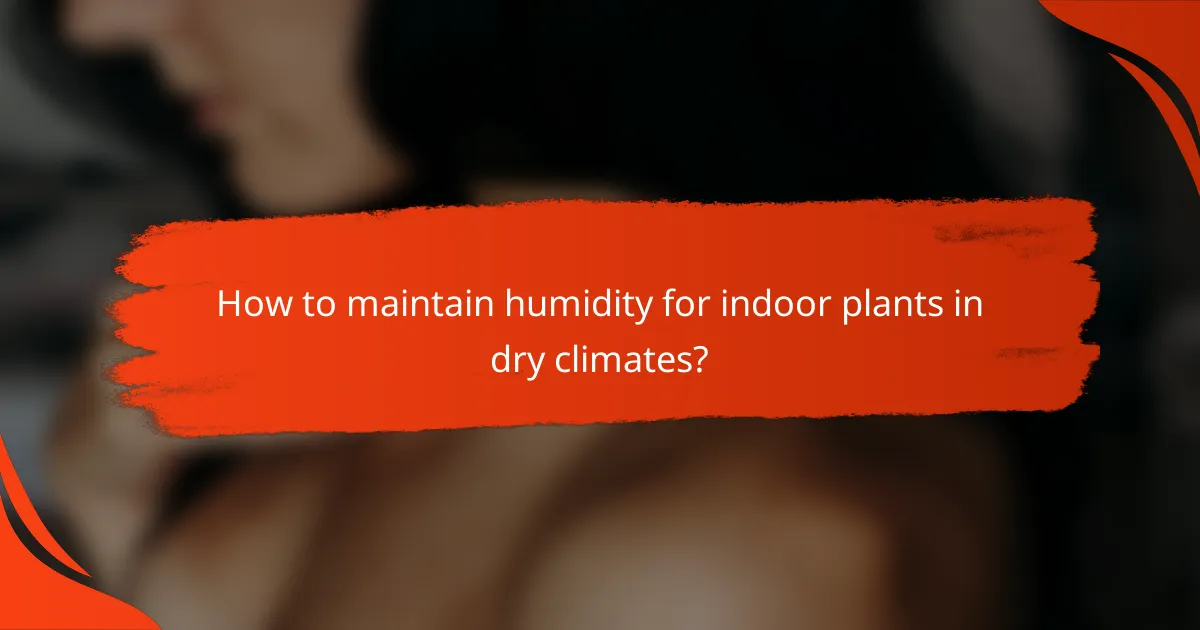
How to maintain humidity for indoor plants in dry climates?
Maintaining humidity for indoor plants in dry climates is essential for their health and growth. Implementing a few strategies can significantly improve moisture levels, creating a more suitable environment for your plants.
Use humidifiers for optimal moisture
Humidifiers are one of the most effective tools for increasing humidity in indoor spaces. They can maintain consistent moisture levels, especially during dry seasons or in arid regions. Choose a model that suits your space size and consider using a hygrometer to monitor humidity levels, aiming for around 40-60% relative humidity.
When selecting a humidifier, consider options like ultrasonic or evaporative models, which are generally quieter and more efficient. Regularly clean your humidifier to prevent mold and bacteria buildup, ensuring a healthy environment for your plants.
Group plants to create microclimates
Grouping plants together can help create localized humidity pockets, benefiting all the plants involved. This method works because plants release moisture through transpiration, which can raise humidity levels in their immediate surroundings. Aim to place humidity-loving plants together to maximize this effect.
Consider using plant stands or shelves to create vertical groupings, which can enhance airflow and light exposure while still maintaining a humid environment. Just ensure that the plants have compatible light and water needs to thrive together.
Utilize pebble trays for evaporation
Pebble trays are a simple yet effective way to increase humidity around your plants. Fill a shallow tray with pebbles and add water until it just covers the pebbles. As the water evaporates, it will raise the humidity in the air surrounding the plants.
Place the pots on top of the pebbles, ensuring that the bottom of the pots does not sit directly in the water to avoid root rot. This method works well for individual plants or smaller groupings and can be easily adjusted based on the size of your pots.
Regular misting techniques
Misting plants can provide a quick boost in humidity, especially for those that thrive in moist environments. Use a spray bottle to lightly mist the leaves, focusing on the undersides where transpiration occurs. Aim to mist in the morning to allow leaves to dry before evening.
Be cautious not to over-mist, as excessive moisture can lead to fungal issues. Misting is best used as a supplement to other humidity-boosting methods rather than a standalone solution.
Choose humidity-loving plant species
Selecting plants that naturally thrive in high humidity can simplify your indoor gardening efforts in dry climates. Species such as ferns, peace lilies, and snake plants are known for their ability to tolerate and even prefer higher moisture levels.
When choosing plants, consider their specific humidity requirements and how they will fit into your indoor environment. Researching the native habitats of these plants can provide insights into their care needs and help you create a more suitable atmosphere for them to flourish.

What are the best indoor plants for low humidity?
The best indoor plants for low humidity are those that can thrive in dry environments without requiring excessive moisture. These plants typically have adaptations that allow them to retain water and tolerate arid conditions, making them ideal for homes with low humidity levels.
Snake Plant (Sansevieria)
Snake plants are highly resilient and can survive in low humidity. They have thick, waxy leaves that help retain moisture, making them perfect for dry indoor air. Additionally, they require minimal care and can thrive in various light conditions.
To care for a snake plant, water it only when the soil is completely dry, typically every few weeks. Avoid overwatering, as this can lead to root rot.
ZZ Plant (Zamioculcas zamiifolia)
The ZZ plant is known for its ability to withstand neglect and low humidity. Its glossy leaves store water, allowing it to thrive in dry conditions. This plant is also tolerant of low light, making it suitable for various indoor environments.
When caring for a ZZ plant, water it sparingly, allowing the soil to dry out between waterings. This plant is particularly forgiving of irregular watering schedules.
Pothos (Epipremnum aureum)
Pothos is a popular choice for low humidity settings due to its adaptability and hardiness. It can grow in a range of light conditions and is known for its trailing vines, which can add aesthetic appeal to any space.
To keep pothos healthy in dry air, ensure it receives indirect light and water it when the top inch of soil feels dry. Regular pruning can help maintain its shape and encourage bushier growth.
Spider Plant (Chlorophytum comosum)
Spider plants are excellent for low humidity environments, as they can tolerate dry air and are easy to care for. Their arching leaves and small plantlets make them visually appealing and a great addition to any indoor space.
Water spider plants when the soil feels dry to the touch, typically every week or two. They also benefit from occasional misting, which can help increase humidity around the plant without overwatering.
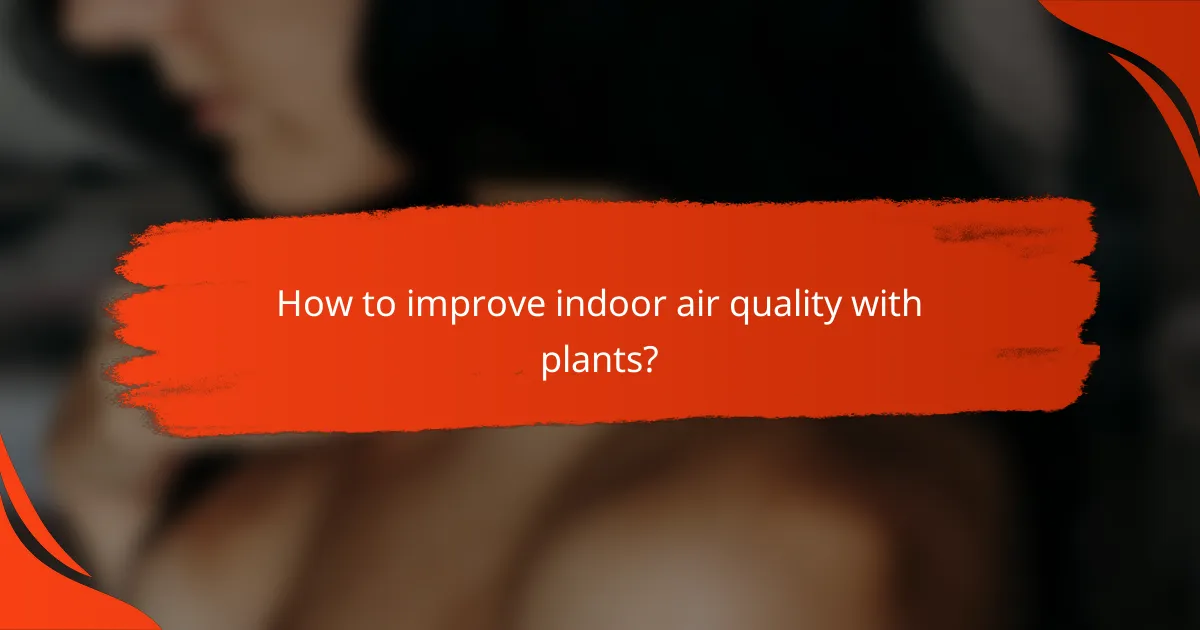
How to improve indoor air quality with plants?
Improving indoor air quality with plants involves selecting species that effectively filter pollutants and enhance humidity levels. Certain plants, like peace lilies and Boston ferns, can significantly contribute to a healthier living environment.
Use peace lilies for air purification
Peace lilies are known for their exceptional ability to purify indoor air by removing toxins such as formaldehyde and benzene. They thrive in low light and require minimal care, making them ideal for various indoor spaces.
To maximize their air-purifying effects, place peace lilies in areas with stagnant air, as they can help reduce airborne pollutants. Regularly watering them and ensuring proper drainage will keep them healthy and effective.
Incorporate Boston ferns for humidity
Boston ferns are excellent for increasing humidity levels indoors, which is particularly beneficial in dry climates. They release moisture into the air through a process called transpiration, helping to create a more comfortable environment.
To maintain their humidity-boosting properties, keep Boston ferns in bright, indirect light and ensure the soil remains consistently moist. Grouping them with other plants can enhance their humidity effects even further.
Benefits of Aloe Vera for health
Aloe Vera is not only a popular houseplant but also offers numerous health benefits, including soothing skin irritations and improving air quality. It can absorb carbon dioxide at night, making it a unique addition to bedrooms for better breathing while sleeping.
To care for Aloe Vera, place it in a sunny spot and water it sparingly, allowing the soil to dry out between waterings. This hardy plant is low-maintenance and can thrive in various indoor conditions.
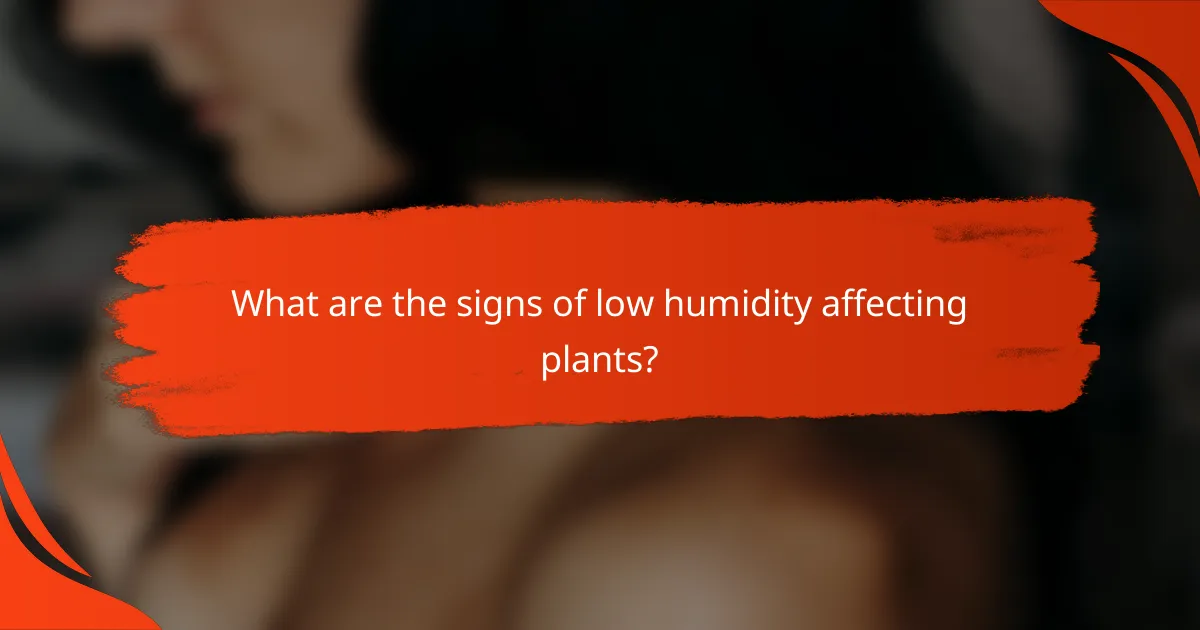
What are the signs of low humidity affecting plants?
Signs of low humidity affecting plants include visible stress indicators such as leaf curling, browning tips, and increased pest activity. Recognizing these symptoms early can help you take action to improve your plants’ environment.
Leaf curling and browning tips
One of the most noticeable signs of low humidity is leaf curling, where the edges of the leaves start to roll inward. This curling occurs as the plant attempts to conserve moisture, leading to browning tips that indicate dehydration. If you observe these symptoms, consider increasing humidity levels around your plants.
To mitigate this issue, you can mist the leaves regularly or use a pebble tray filled with water beneath the pot. Grouping plants together can also create a microenvironment with higher humidity.
Increased pest infestations
Low humidity can lead to an uptick in pest infestations, particularly spider mites and aphids, which thrive in dry conditions. These pests can cause significant damage to your plants by sucking sap and weakening their overall health. Regularly inspecting your plants for signs of pests is essential for early intervention.
To combat this, maintain adequate humidity levels and consider using insecticidal soap or neem oil if infestations occur. Keeping your plants clean and well-hydrated can help deter pests from taking hold.
Stunted growth and wilting
Plants suffering from low humidity often exhibit stunted growth and wilting, as they struggle to absorb sufficient moisture. This can lead to a lack of vigor and overall poor health, making it crucial to address humidity issues promptly. If your plants are not growing as expected, check the humidity levels in their environment.
To encourage healthy growth, you can use a humidifier or place a water-filled container near your plants. Regularly monitoring humidity levels can help ensure your plants thrive in a comfortable environment.
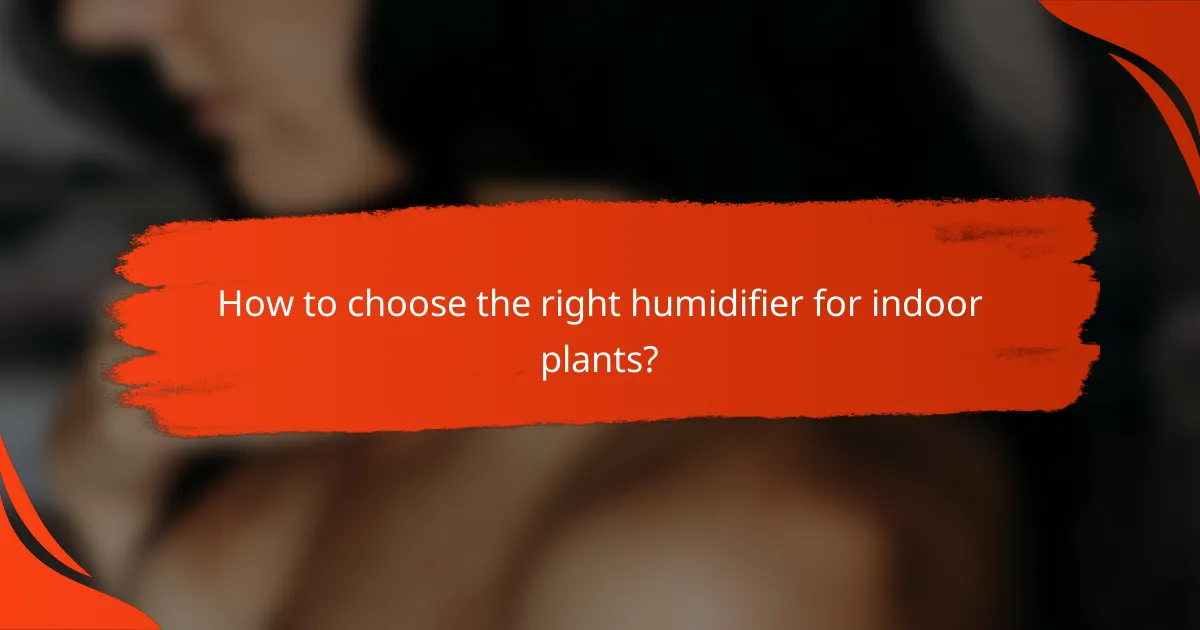
How to choose the right humidifier for indoor plants?
Choosing the right humidifier for indoor plants involves considering factors like capacity, size, and noise levels. A suitable humidifier can help maintain the optimal humidity levels that many houseplants thrive in, especially in dry climates.
Consider capacity and size
The capacity and size of a humidifier are crucial for effectively maintaining humidity levels in your indoor space. Smaller units may be sufficient for single rooms, while larger models are better for open areas or multiple rooms. Look for humidifiers with a tank capacity that can run for several hours without needing a refill.
For example, a humidifier with a capacity of 1 to 2 gallons can typically cover a space of around 300 to 500 square feet. Ensure to choose a model that fits your room size and the number of plants you have.
Evaluate noise levels for comfort
Noise levels are an essential consideration when selecting a humidifier, especially if it will be used in living spaces or bedrooms. Many modern humidifiers are designed to operate quietly, with noise levels typically ranging from 20 to 40 decibels, comparable to a whisper or soft background noise.
To ensure comfort, look for models labeled as “whisper-quiet” or “ultrasonic,” which tend to produce less sound. Avoid units that generate loud operational noise, as this can be disruptive in a home environment.
